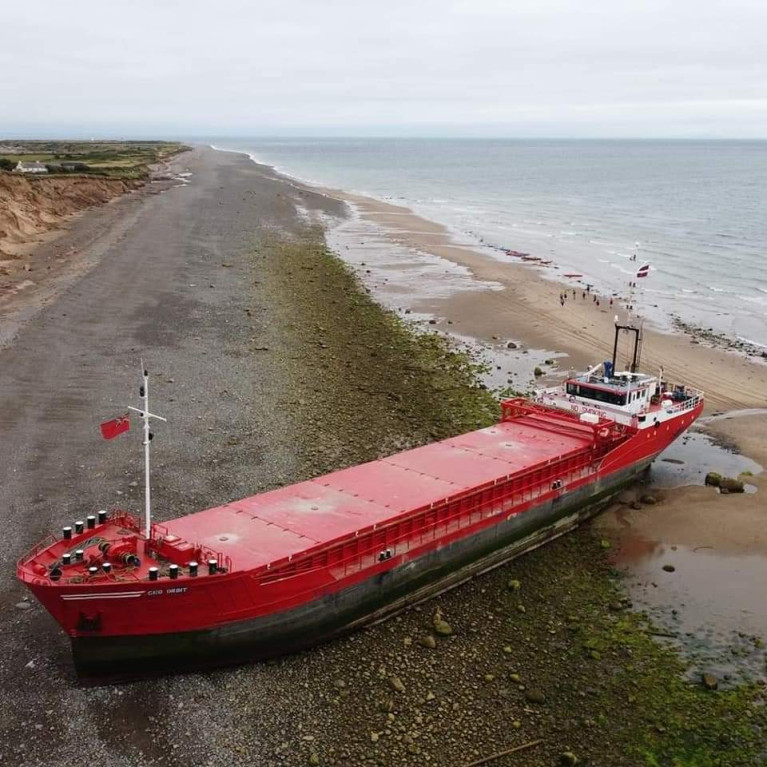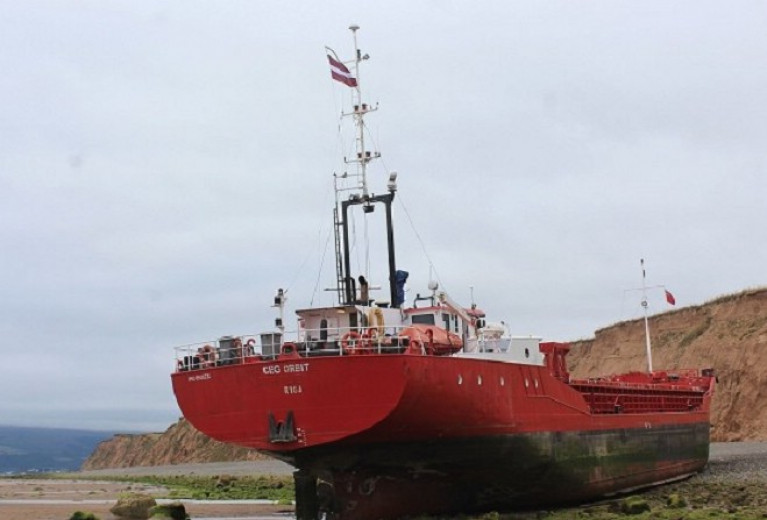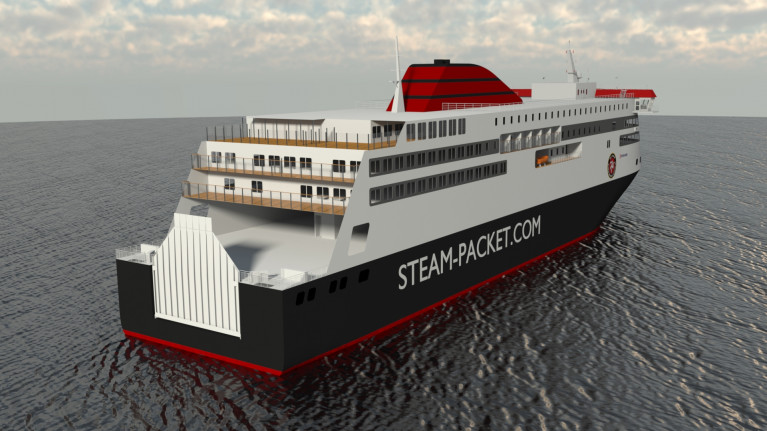Displaying items by tag: IOM Registry
Isle of Man Registry Strikes Four Ship Deal with Douglas Based Ship Owner MX Bulk
The Isle of Man Ship Registry (IOMSR) is expanding its fleet after securing a new deal with fellow Douglas based ship owner MX Bulk.
The agreement will see the IOMSR flag four new 63,878 MT bulk carriers presently being built by the Tsuneishi Group in Zhoushan, China. The vessels include the recently delivered Ellan Manx (above) and Maye Manx as well as the Greeba Manx and Kirry Manx which will come into service this autumn.
IOMSR director Cameron Mitchell said the register is delighted to welcome the new ships which will join five other MX Bulk vessels already under the Manx Ensign.
“We are very pleased to extend our relationship with MX Bulk,” he said. “We share much in common from our Isle of Man headquarters to our dedication to quality, high standards and seafarer welfare. The Isle of Man Ship Registry can now offer support through our China representative Jon Kingdon in Shanghai. Through Jon we can supply on the ground technical support in China while the ships are being built as well as here on island. The Far East and China remain key growth markets for the IOMSR with two thirds of our fleet now managed in Asia.”
Mr Mitchell said bulk carriers make up the largest percentage of vessels on the registry followed by oil tankers, gas carriers and chemical tankers.
An MX Bulk spokesperson said:“We are delighted to extend our working relationship with the Isle of Man Ship Registry. Our latest new buildings present particular challenges, given the global geopolitical and economic uncertainty which exists in the world today. The stability of the Isle of Man as a jurisdiction alongside the professionalism and integrity of the ship registry continues to offer great reassurance for companies such as ours. We look forward to continuing our working relationship with the Isle of Man Ship Registry for many years to come.”
Cameron said there remains a considerable respect among tanker and bulk carrier owners for the quality and history associated with the Red Ensign allied with the Royal Navy protecting its ships anywhere in the world.
“Owners want a flag that they can rely on particularly for the speed of technical support,” he said. “That is something the Isle of Man is well known for, whenever and wherever there is a defect or issue with port state control the IOMSR team reacts immediately. We further offer clients an easy, efficient and competitive service. This includes low fees, with one annual payment and no stealth charges, whereas some open registries charge for almost all additional services.
“There is no annual tonnage tax based on size of the ship, no inspection fee, no consular fee, no casualty investigation fees and we offer a discount for multi ship fleets as well as fee incentives for environmentally friendly ships.
“We continue to develop and lead. We were one of the first flag states to offer digital certificates. We were also the first flag state to offer a discount on registration fees for vessels using green technology and we were the first registry to launch a seafarer welfare app to support seafarers’ mental health.”
IOMSR background
The IOMSR is one of the world’s leading flag states and is ranked 17 in the world by Clarkson’s with around 400 ships and 14m GT under its flag.
The registry has held top spot on the Paris MoU Port State Control whitelist and is firmly on the whitelist in the Tokyo MoU rankings. It is also one of the high-performing flags on the US Coast Guard’s Qualship 21 scheme.
The registry is headquartered in Douglas on the Isle of Man, a self-governing British Crown dependency and is a Category One member of the Red Ensign group.
The IOMSR was the first flag to issue acceptance of a modification for a Very Large Gas Carrier to run on liquefied petroleum gas (LPG) as a greener fuel for Oslo-listed shipping company BW LPG.
Almost a year ago a cargo ship that ran aground at Cranstal on the Isle of Man, has been removed from the Latvian Ship Registry and is now operating with a new name under the flag of Cyprus.
The former CEG Orbit is now called Leila.
A report into the beaching near Ramsey was prepared by the Isle of Man Ship Registry on behalf of its Latvian counterparts.
Details of the incident report have never been made public but the Board of the Marine Administration of Latvia told Manx Radio the vessel has been excluded from the country's register.
CEG Orbit ran aground on 27 August last year and was re-floated on the second attempt by two tugs.
Isle of Man Registry Confirms Investigation Into Beaching of Cargo Ship
The Isle of Man Ship Registry has confirmed it's carrying out a preliminary investigation into the beaching of a cargo ship at Cranstal.
As Manx Radio reports, the incident took occurred in the early hours of 26 August.
The cargo ship CEG Orbit was successfully re-floated, on the second attempt, at 2am the following day.
Director of the Isle of Man Ship Registry Cameron Mitchell has told Manx Radio the investigation is being carried out on behalf of the Latvian authorities.
That's due to the ship sailing under the Latvian flag.
The CEG Orbit was removed from the beach by two tugs the Wendy Ann, of the Laxey Towing Company, and the CT Vector from Liverpool.
After being refloated the ship made her way to Douglas where she was checked for damage.
A ferry newbuild for the Isle of Man Steam Packet Company which is to be a Diesel Electric Hybrid powered ship, will be flagged with the Isle of Man Ship Registry, extending a longstanding relationship between the two Manx organisations.
The Steam Packet Company announced of the newbuild in July that it had signed a contract with South Korea’s Hyundai Mipo Dockyard for a purpose-built roll-on/roll-off passenger (RoPax) vessel. The new ship will replace the firm’s conventional ferry, Ben-my-Chree, offering considerably more passenger space, enhanced on-board facilities and greater freight capability.
The Isle of Man Ship Registry is one of the world’s leading registers of ships and super yachts. Its fleet already includes the Ben-my-Chree and the Steam Packet Company’s wave-piercing high-speed catamaran, Manannan.
Chris Martin, a Senior Surveyor at the Isle of Man Ship Registry, said the registry’s role will include liaising with the Steam Packet Company, its chosen classification society Lloyd’s Register, and the shipyard during the build. The team will also advise on any novel design features to ensure compliance with international conventions. Once the new ferry enters service, the registry team will continue to provide advice and regulatory oversight.
He said: “The Isle of Man Steam Packet Company is less than a mile down the road from our office and we have always had a good working relationship. We are very pleased to see that continuing with this new vessel.
“It is the Company’s first new-build vessel in 23 years, so it is an exciting project for the Steam Packet Company and the Isle of Man. From the registry’s side there is a lot more involvement when you are dealing with a new-build compared to flagging an existing ship. Our experience of new-build commercial vessels puts us in a great position to provide support throughout the construction process and beyond.”
A Diesel Electric Hybrid power system will be one of a number of features aimed at making the new ship as environmentally efficient as possible. It will also need to be capable of tolerating winter weather conditions in the Irish Sea when sailing between Douglas and Heysham, Lancashire. London-based design and engineering consultancy Houlder has been appointed to act as technical advisor during the design and build process.
Construction is due to start in the middle of next year, with delivery scheduled for spring 2023. Once in service, the Ben-my-Chree will be retained as a back-up vessel, enhancing security of the Steam Packet Company’s passenger and freight links, and providing increased capacity during major annual events such as the Isle of Man TT and Classic TT.
































































